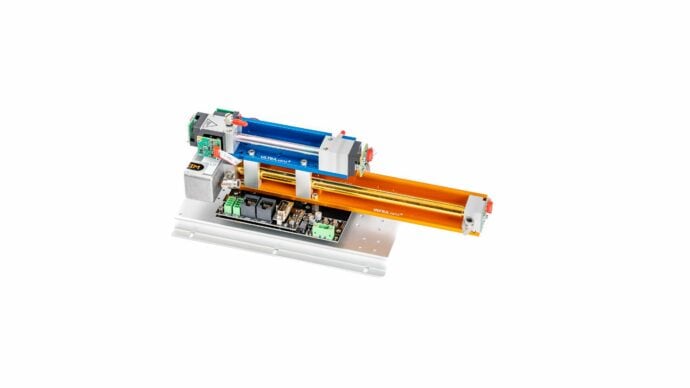General Information on CH4 – Methane
Methane (CH4) is the simplest member of the alkane group (CnH2n+2). Under normal conditions, it is a colorless, odorless, flammable gas. Methane is insoluble in water and forms explosive mixtures with air. It burns in the presence of oxygen to form carbon dioxide and water. It occurs naturally as the main component of natural gas, among other things. Since it exists in large quantities in deposits, it is an attractive source of energy. Methane serves as a heating gas and is used in the chemical industry as a starting material for technical syntheses.
The gas is produced in considerable quantities by biological processes and is the main component of biogas. Other sources, such as forest fires or volcanic eruptions also release methane.
Methane measurement in biogas plants
Measuring methane in biogas plants is an important process to ensure the efficiency and safety of the plant. This can be done by using a gas analyzer capable of measuring the concentration of methane in the exhaust air. An important factor when measuring methane is the accuracy of the instrument, as an inaccurate measurement can lead to misjudgements of plant performance. It is also important that the instrument is regularly maintained and calibrated to ensure that the measurements are reliable. Measuring methane is also important to ensure that the plant remains within the legal limits for greenhouse gas emissions.
Measuring methane in the respiratory gas of cows
Methane is a greenhouse gas produced by many animals, including cows. It is produced when microorganisms in the digestive tract of animals break down organic material, releasing methane. In cows, Methane is mainly produced by the first part of the digestive tract, the rumen. The concentration of Methane in the respiratory gas of cows can be detected by NDIR measurements as part of a Methane emission study. These studies can help quantify the amount of Methane produced by cows and can help provide better estimates of global Methane emissions. Feed selection, feeding times and amount of feed have a significant impact on CH4 emissions.
CH4 measurement in natural gas
CH4 measurement is important because methane is a significant indicator of the quality of natural gas and also an important factor in the efficiency and sustainability of gas production. The CH4 content is usually measured using the NDIR method (INFRA.sens). The INFRA.sens can accurately determine the Methane content by selective IR analysis, even in the presence of other hydrocarbons (Ethane, Propane, Butane). The calorific value determination of natural gas is a measure of the energy released during the combustion of Methane. These measurements are important to monitor and regulate the quality and efficiency of natural gas production, and to minimize environmental impacts. The results of CH4 measurements can also be used to develop emission standards and regulations for natural gas production.
Gas Sensors for the Detection of CH4

- Innovative NDIR Sensor (non-dispersive infrared sensor)
- Max. 3 simultaneously detectable gases per sensor unit
- Measuring ranges from ppm to Vol.-%
RITTER »MultiGas« Combined Modules NDIR + NDUV
RITTER »MultiGas« Modules can also be a combination of both NDIR sensors and NDUV sensors on a common board. With this unit, up to 3 gas components can be measured simultaneously. The basic electronics can supply IR and UV radiation sources with different frequencies for 0 Hz (DC) to 100 Hz (AC). This system is an ideal tool for detecting multi-component gas at low ppm levels.
Please note: For technical and chemical reasons, not every combination of gases/measuring ranges can be analyzed/measured in a single or combined RITTER »MultiGas« module. As this is a rather complex topic, please do not hesitate to contact one of our gas experts first.


